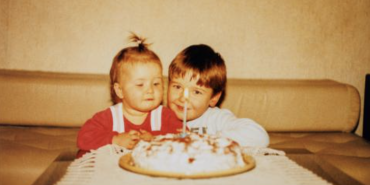Meet 5 Unique Women in Jesus' Family Tree

Are you one of those persons obsessed with your family tree? If not, perhaps you have a relative who has an account with ancestry.com and keeps urging you to look at the site and see what has been discovered about your family tree. Usually, we find that we are related to some famous person or royalty. Whether that is accurate or not, it does give one a sense of importance and may boost one's self-esteem for a short while.
But when we consider the reasons for exploring Jesus' family tree as Matthew (1:1-17) and Luke (3:23-28) do, we are perplexed by both the task of tracing divine ancestry and the differences between the two genealogies.
If Jesus is the Christ, the divine Son of God, what is the importance of His earthly lineage?
Scriptures tell us that Christ is the fulfillment of the promises God made to Abraham and David. Jesus, as the Church has affirmed down through the ages, is both human and divine. The genealogies that we find in Matthew and Luke affirm His humanity, although with different purposes.
Since the second century, Christian writers have addressed the issue of the differences in the genealogies of Matthew and Luke. From early times, it appears that the reason given was that Matthew followed Joseph's genealogy and Luke gave Mary's genealogy.
The Talmud (explanations of the Old Testament and Jewish traditions by rabbis) refers to Mary as the daughter of Heli which is the first name listed in Luke's genealogy as the father of Joseph (who was the "so it was thought" father of Jesus, Luke 3:23). Tradition says that Mary had no brothers and so when she married Joseph, he, according to Jewish law (Numbers 36), became the legal son of Heli. Augustine (354-430A.D.) seems to confirm this idea when he says that "Joseph was able to have two fathers, one blood father, by whom he was born and another adoptive father by whom he was adopted."
Hilary, Bishop of Poitiers, made the astute observation that Mary and Joseph belonged to the same clan and so would have common descendents. He pointed out that Matthew's genealogy traces Jesus' "kingly succession" while "Luke has set forth in order of priestly origin [Levi]." (Simonetti, NT Ia, 4) Matthew's Gospel (1:17) seems to indicate that the persons named were selected and arranged into 3 main eras with 14 generations named in each era, although after the exile only 13 are named, including Jesus. Luke names 18 of those found in Matthew's Gospel, but goes on to name others and 35 more fathers than Matthew does.
Of course, Luke's genealogy begins with Jesus and stretches all the way back to Adam, emphasizing that Jesus belongs to all of humanity and not just to the Jews. Matthew, written primarily for Jewish Christians, emphasizes the royal lineage of Jesus the Messiah in being the son of David, and His Jewishness, being the son of Abraham.
Notice that in Matthew 1:1, Jesus is listed first as the son of David, even though chronologically, Abraham came first. Matthew wants his readers to understand that Jesus is the King-the Messiah-for whom the Jews were waiting. Luke's concern is more general, showing that Jesus is both king and priest, descending from Adam, the original father of all humanity.
But perhaps the most interesting difference between Matthew and Luke is that Matthew includes five women in his list. Ordinarily, women were not included in the genealogies of the first century and this traditional genealogy is seen in Luke. So Matthew is unique in his identification of these women as significant mothers in Jesus' lineage. But these women were not, on the surface, notable or saintly women whom we would want to find in our lineage!
Tamar
The first woman named is Tamar who fathered Perez and Zerah by Judah (1:3). Her story is told in Genesis 38. Tamar was the widowed daughter-in-law of Judah who disguised herself as a prostitute in order to trick Judah into impregnating her and giving her a son who would tie her to her dead husband's family. "Under levirate law, Judah and his sons had sinned against Tamar, and in this sense she was seeking what was hers by right."
Often, Tamar is described as a prostitute and thus a blot on the family record. But as we understand Tamar in her specific context we find that Judah and his sons, who were supposed to raise up children by Tamar for their dead son and brother, were the sinners in this story! Tamar had to resort to trickery to make her father-in-law do the right thing and produce the son that would be the ancestor of Jesus.
Rahab
The next woman mentioned is Rahab, the wife of Salmon, who is also identified as a prostitute and a Gentile living in Jericho. Her story is found in Joshua 2 and 6. She gave hospitality to the Jewish spies who came to Jericho and hid them from the king of Jericho when he wanted to kill them. Her confession of faith is found in Joshua 2:11, "the Lord your God is God in heaven above and on the earth below."
She is listed in the faith hall of fame in Hebrews 11 as "Rahab, the prostitute" (11:31). What a transformation must have taken place in her life for her to be listed in Hebrews 11! An anonymous ancient Christian writer commented: "Since Salmon was considered noble among the children of Israel and was of the tribe of Judah and the son of the prince, he saw the faithful Rahab thus converted to goodness and beloved by God and led from Jericho at God's command and counted among the daughters of Israel.
Such a wonderful woman surely deserved to become Salmon's wife." Her story certainly affirmed the power of God to transform a life from both ignorance of God and a sinful lifestyle to a woman who was beloved by God and praised for her goodness.
Ruth
Ruth, a widow and a Moabite, became the daughter-in-law of Rahab. Ruth's story is a beautiful one of loyalty. She is one of the few women in the Bible who have a whole book named after her. Her vow to the mother of her dead husband has become a classic quote, often used in weddings to indicate the bride's and/or groom's intentions of loyalty. "Where you go I will go, and where you stay I will stay. Your people will be my people and your God my God" (Ruth 1:16).
Ruth's loyalty was rewarded and she became the wife of Boaz, who belonged to the family of her mother-in-law, Naomi. Ruth's loyalty to Naomi, led to a faith in and loyalty to the God of the Jews. In the tradition of her new mother-in-law, Rahab, Ruth became a part of the lineage of Jesus because of her faith.
Bathsheba
Another woman mentioned in Jesus' genealogy is only referred to as "Uriah's wife" (Matthew 1:6), emphasizing the fact that Bathsheba became King David's wife only after committing adultery with David, who then arranged for her husband to be killed in battle to cover up their shame (2 Samuel 11-12). Again, shame is often assigned to Bathsheba because she was bathing on the roof of her house when her beauty happened to catch the king's eye.
However, in this context, David is clearly the one in control. The difference in status and power would have made it impossible for Bathsheba to resist David's advances. Kroeger and Evans comment that what happened between David and Bathsheba, although it is called adultery, implying mutual consent, "was probably closer to rape. Indeed, when David has brought about Uriah's murder, we are told that Bathsheba mourned for him (2 Samuel 11:26)."
What we learn from this sordid affair is that God can transform situations and bring about newness and hope. David repented of his sin and had a genuine marriage with Bathsheba, resulting in the birth of Solomon, known for his wisdom.
Mary
The fifth and final woman listed in Matthew's genealogy is Jesus' mother, Mary. She is depicted as a young woman (perhaps about 14), a virgin, who was engaged to Joseph. Engagements were serious contracts between two families usually lasting about a year before the couple was formally married and began to live together. The penalty for sexual misconduct was anywhere from being stoned to death to annulling the engagement (divorcing her, Matthew 1:19) and sending the woman back to her family in disgrace.
Matthew gives us the story of Joseph's struggle with Mary's virgin conception. He is described as a good man who did not want to bring disgrace or death on Mary, but struggled with believing that she had not been unfaithful to him. Joseph does believe Mary after an angel appears to him in a dream and confirms what Mary told him.
Left unsaid is how Mary had the courage to tell Joseph that she was pregnant. But that courage and willingness to be the servant of the Lord (Luke 1:38) enabled her to bear the shame of a pregnancy before marriage and to be the mother of the Messiah.
What we discover from the genealogies of Jesus is not just that Jesus was indeed human, as well as divine, but that He descended from a line of people which included very strong, resilient, loyal, and faithful women.
Even where society did not encourage the inclusion of females in genealogies, the faith of these women was so strong they burst out of the confines of socially accepted silence. God is able to take those who appear insignificant and unlikely to succeed and transform them into important witnesses to the power of God!
C. Jeanne Serrão is dean of the School of Theology and Philosophy and professor of biblical literature at Mount Vernon Nazarene University in Mount Vernon, Ohio.
Holiness Today, November/December 2010
Please note: This article was originally published in 2010. All facts, figures, and titles were accurate to the best of our knowledge at that time but may have since changed.




